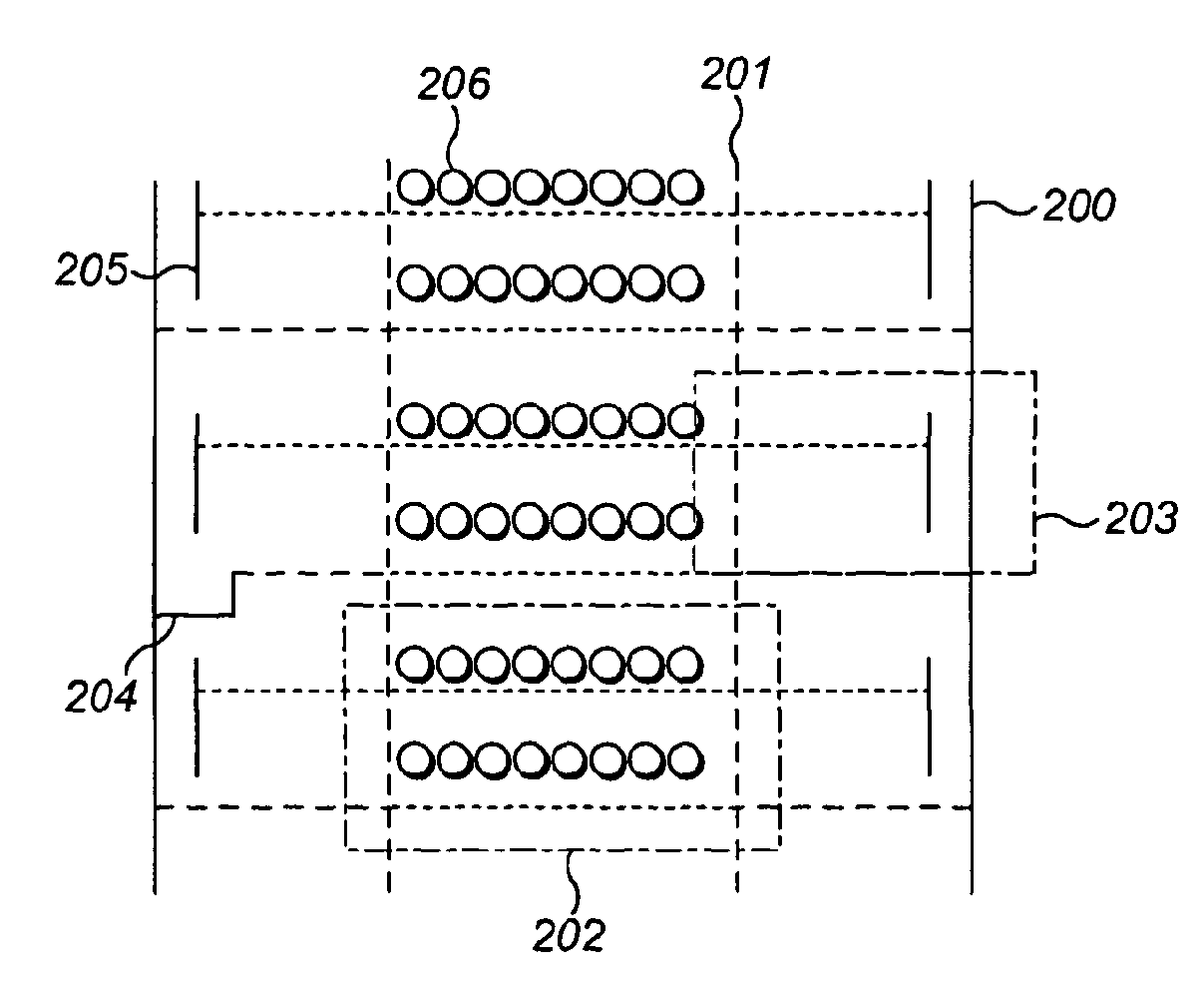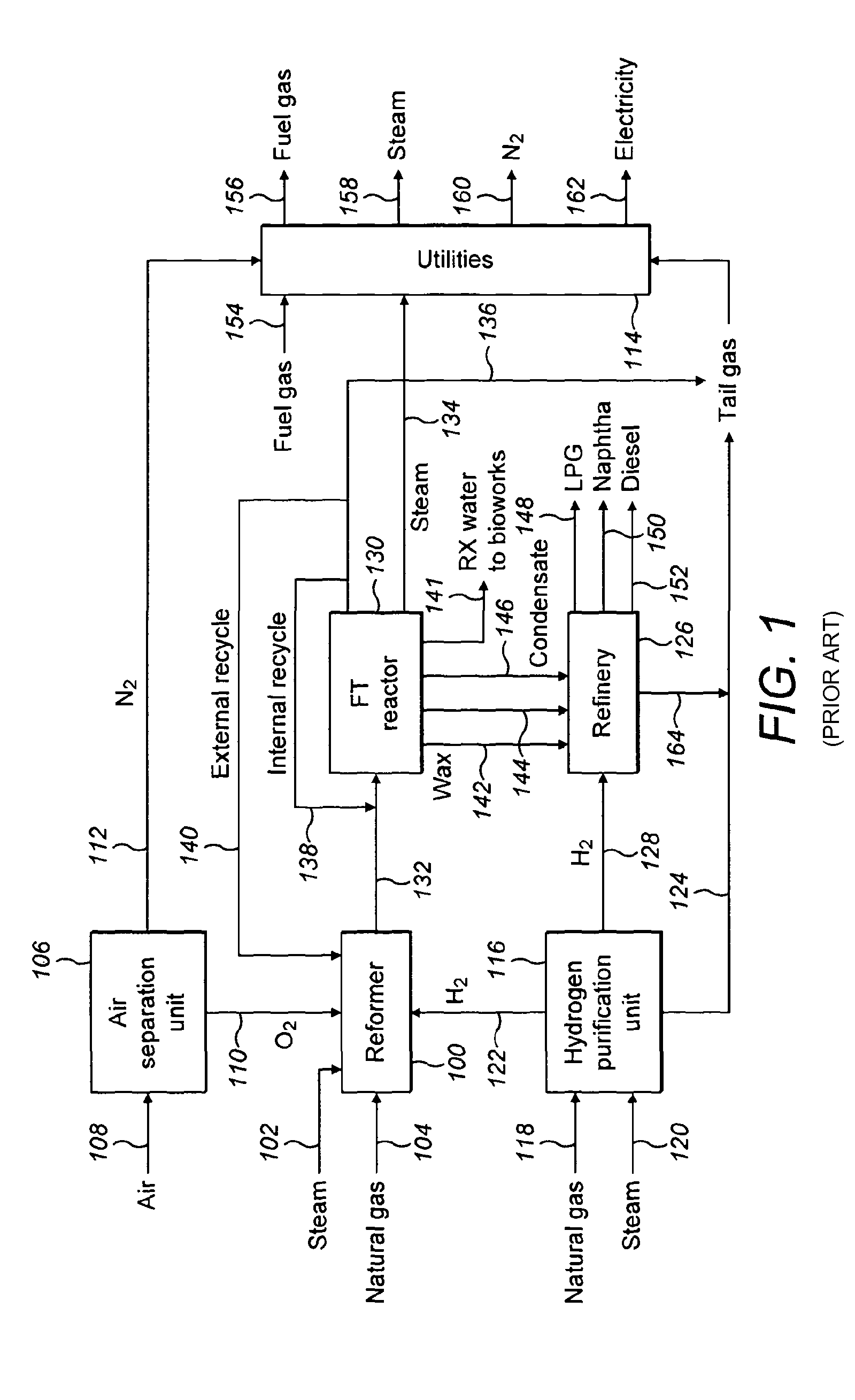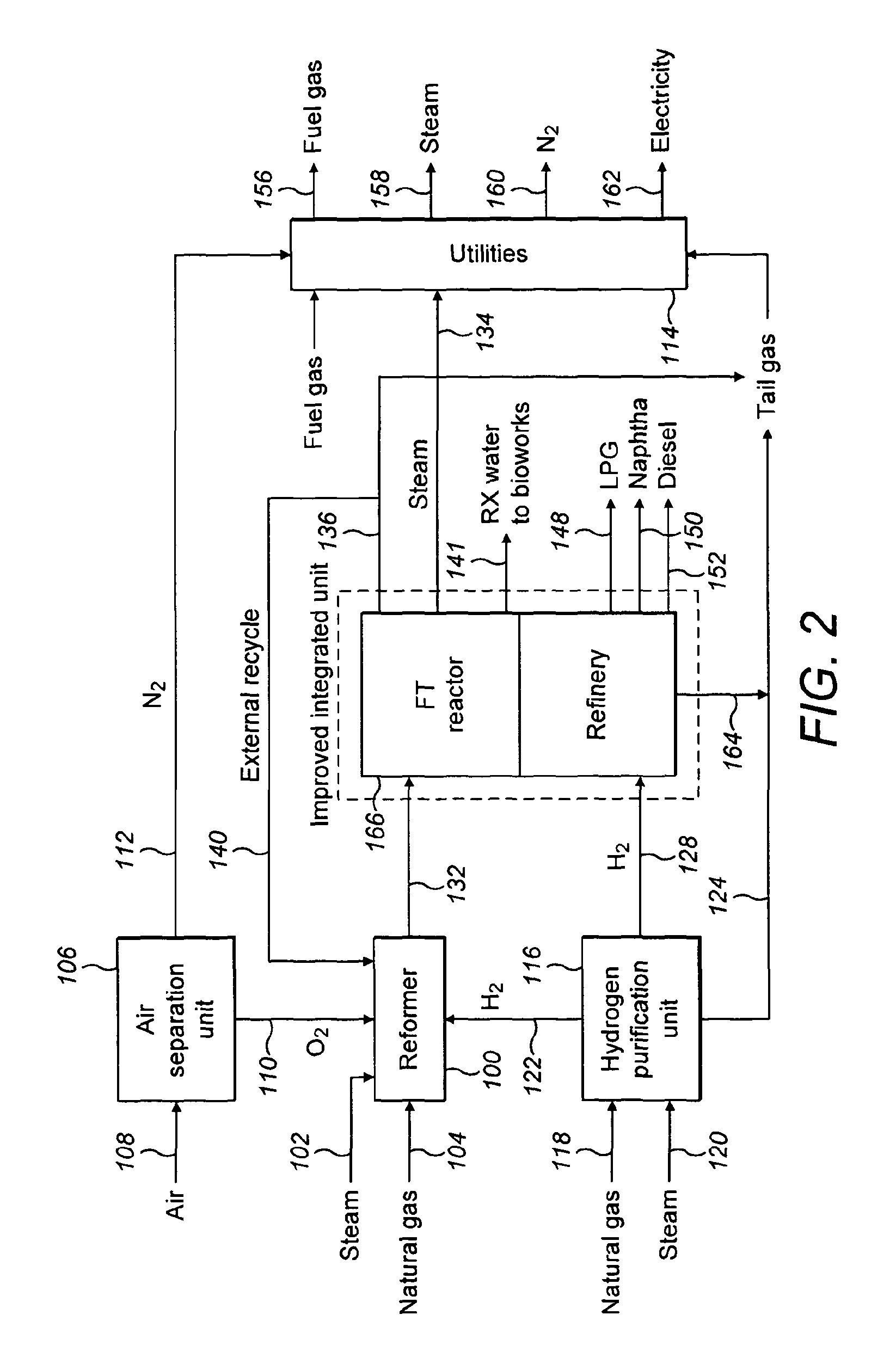Conversion of natural gas
a natural gas and conversion technology, applied in the field of natural gas conversion, can solve the problems of erosive entrained catalyst, catalyst movement, catalyst fine formation associated with reactivity loss, etc., to facilitate simultaneous reaction kinetics and distillation product work up, improve the gtl process, and facilitate the effect of fischer-tropsch reaction
- Summary
- Abstract
- Description
- Claims
- Application Information
AI Technical Summary
Benefits of technology
Problems solved by technology
Method used
Image
Examples
Embodiment Construction
[0041]Referring to FIG. 1 a prior art process and apparatus is shown.
[0042]Natural gas and steam are fed to a reformer 100, via streams 102 and 104 respectively. Air is fed to an air separation unit 106 via stream 108, where it is separated into an oxygen rich stream 110 and a nitrogen rich stream 112. The nitrogen rich stream 112 is fed to the plant utilities, which are generally designated 114.
[0043]Natural gas and steam are also fed to a hydrogen purification unit 116, via streams 118 and 120 respectively. The unit 116 outputs hydrogen via stream 122, which is fed to the reformer 100. The unit 116 also outputs tail gas via stream 124, which is fed to the utilities 114. These streams typically contain a mixture of hydrogen and light hydrocarbons that makes up a low to medium calorific value fuel gas that can be used to as utility gas around the complex.
[0044]Part of the hydrogen outputted from the hydrogen purification unit may be fed to a refinery 126 via stream 128. The refinery...
PUM
| Property | Measurement | Unit |
|---|---|---|
| pressure | aaaaa | aaaaa |
| temperature | aaaaa | aaaaa |
| temperature | aaaaa | aaaaa |
Abstract
Description
Claims
Application Information
 Login to View More
Login to View More - R&D
- Intellectual Property
- Life Sciences
- Materials
- Tech Scout
- Unparalleled Data Quality
- Higher Quality Content
- 60% Fewer Hallucinations
Browse by: Latest US Patents, China's latest patents, Technical Efficacy Thesaurus, Application Domain, Technology Topic, Popular Technical Reports.
© 2025 PatSnap. All rights reserved.Legal|Privacy policy|Modern Slavery Act Transparency Statement|Sitemap|About US| Contact US: help@patsnap.com



